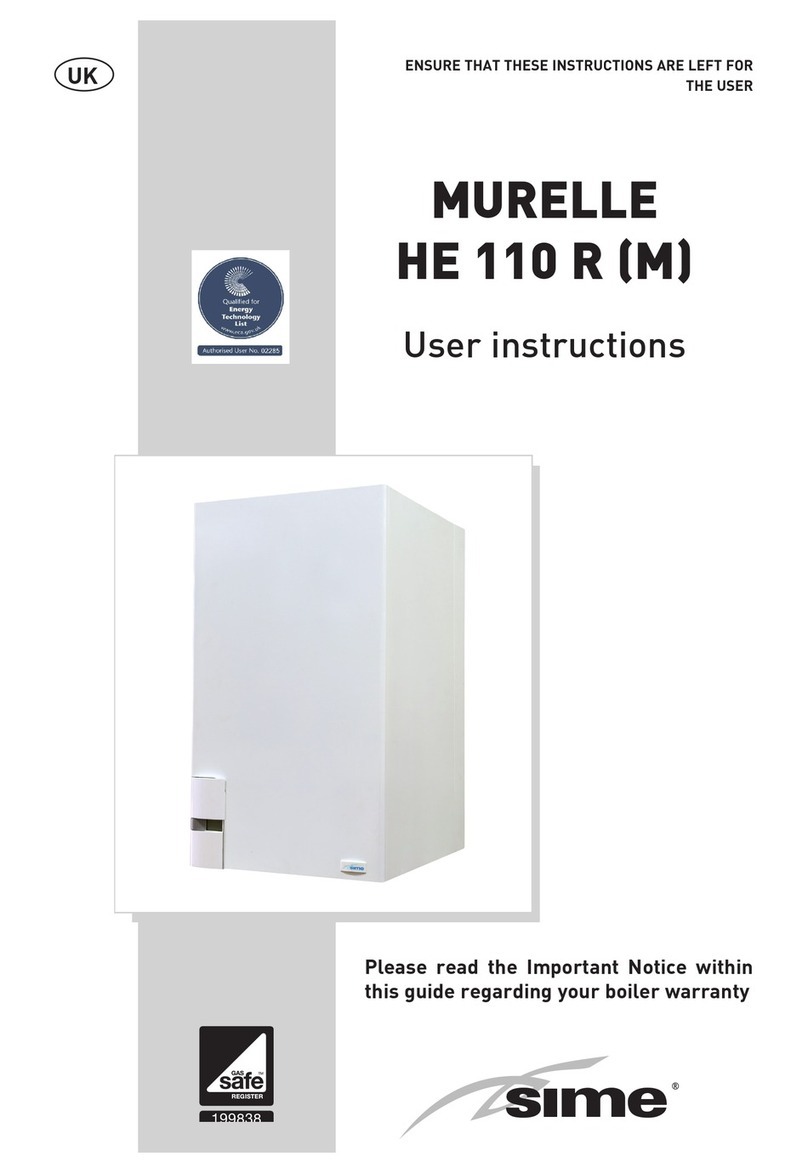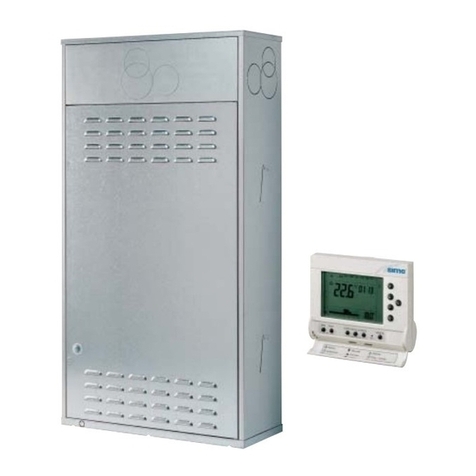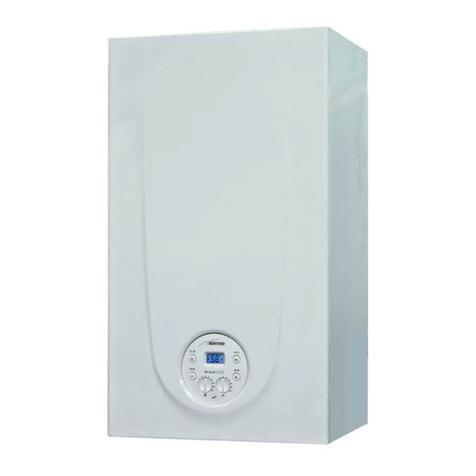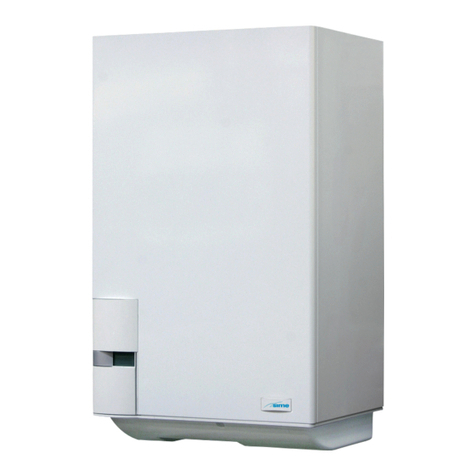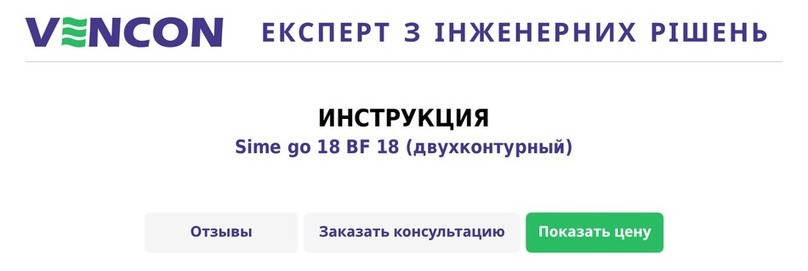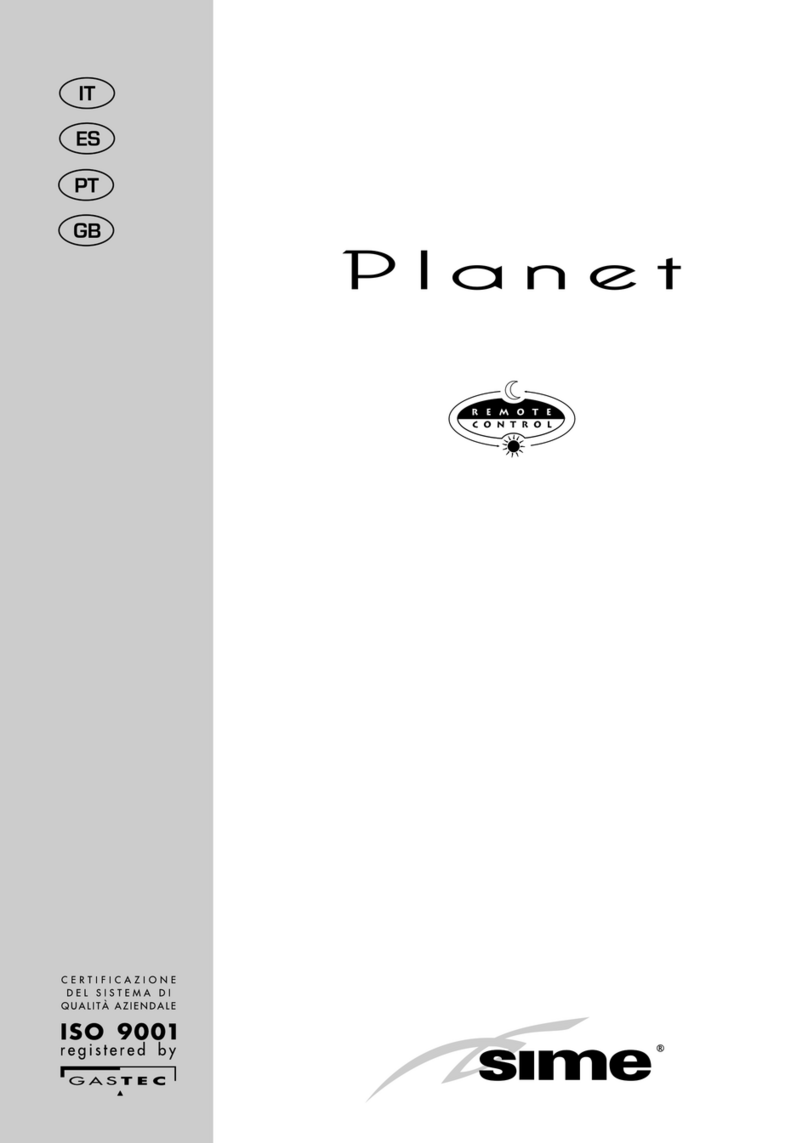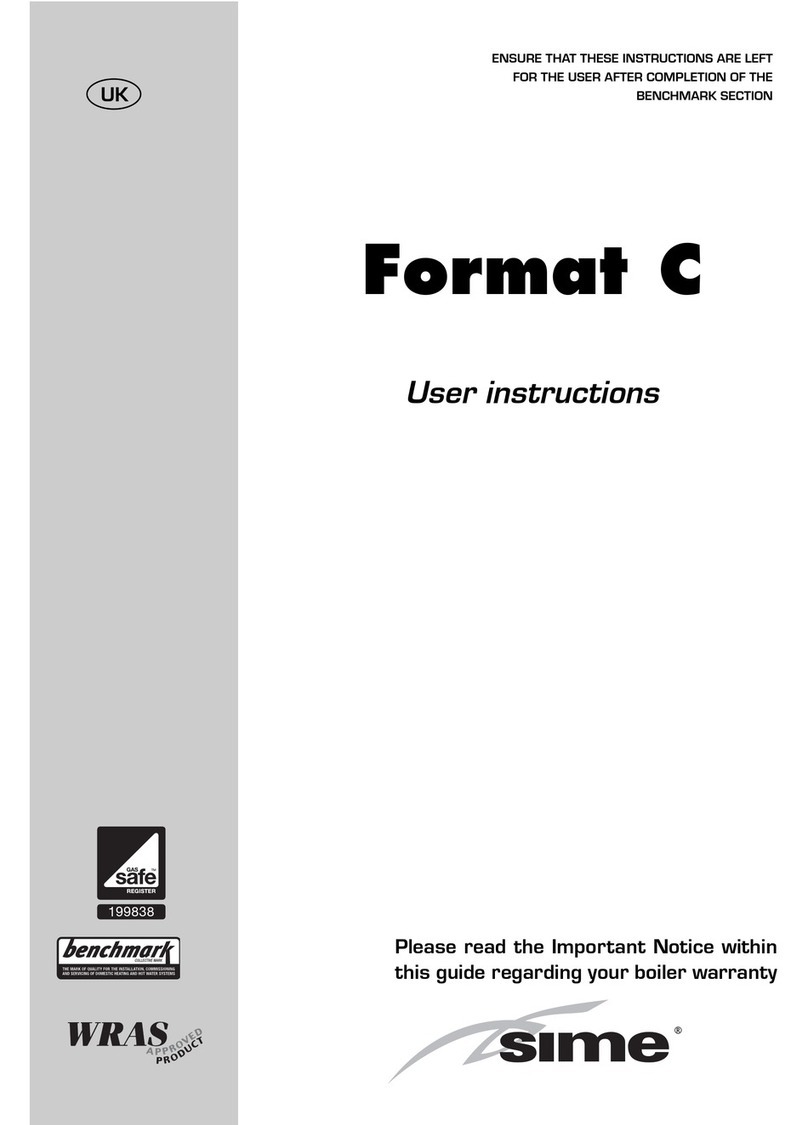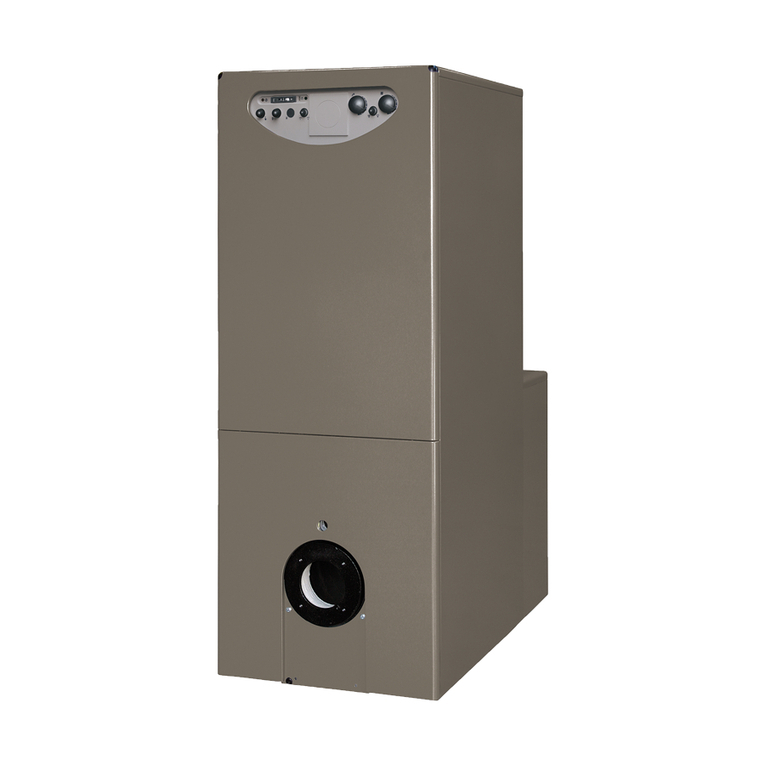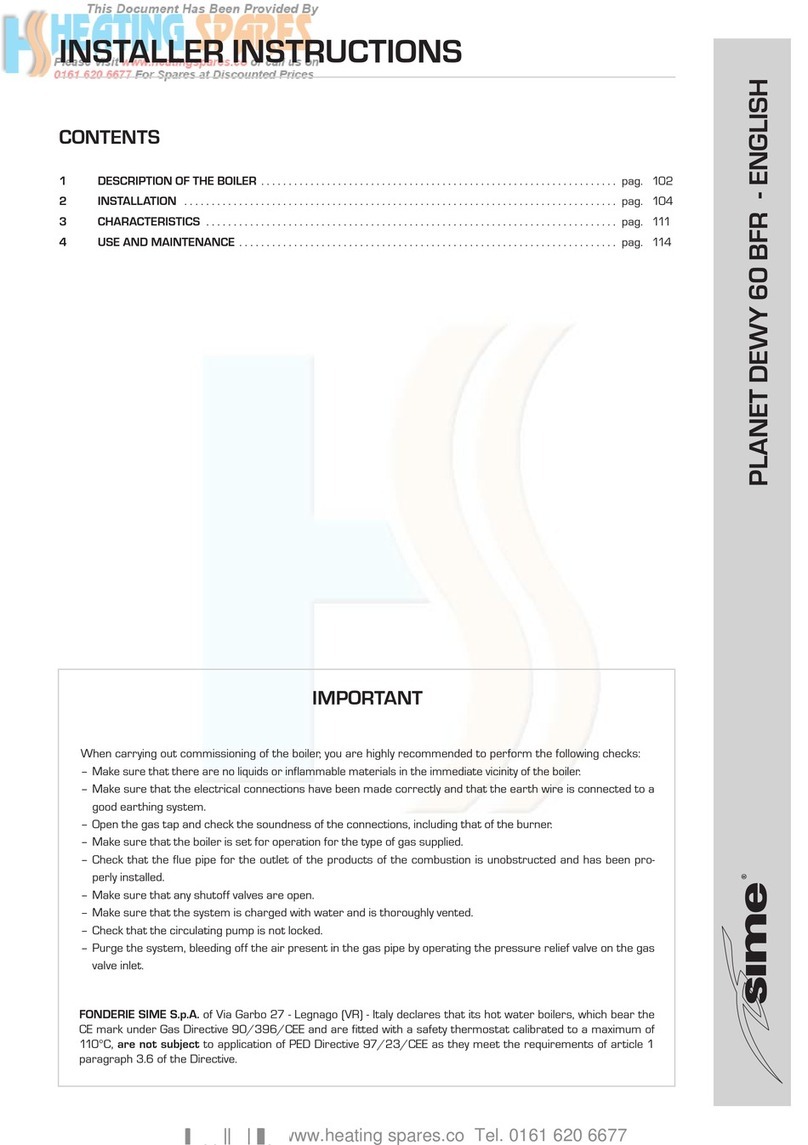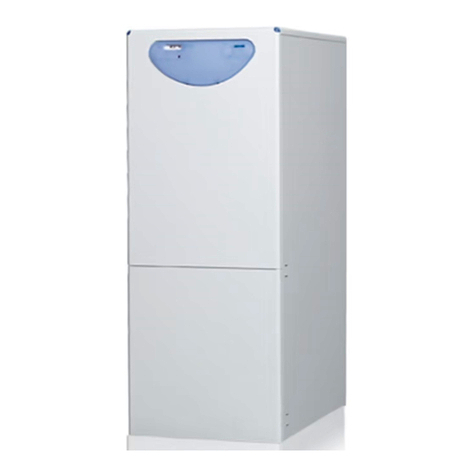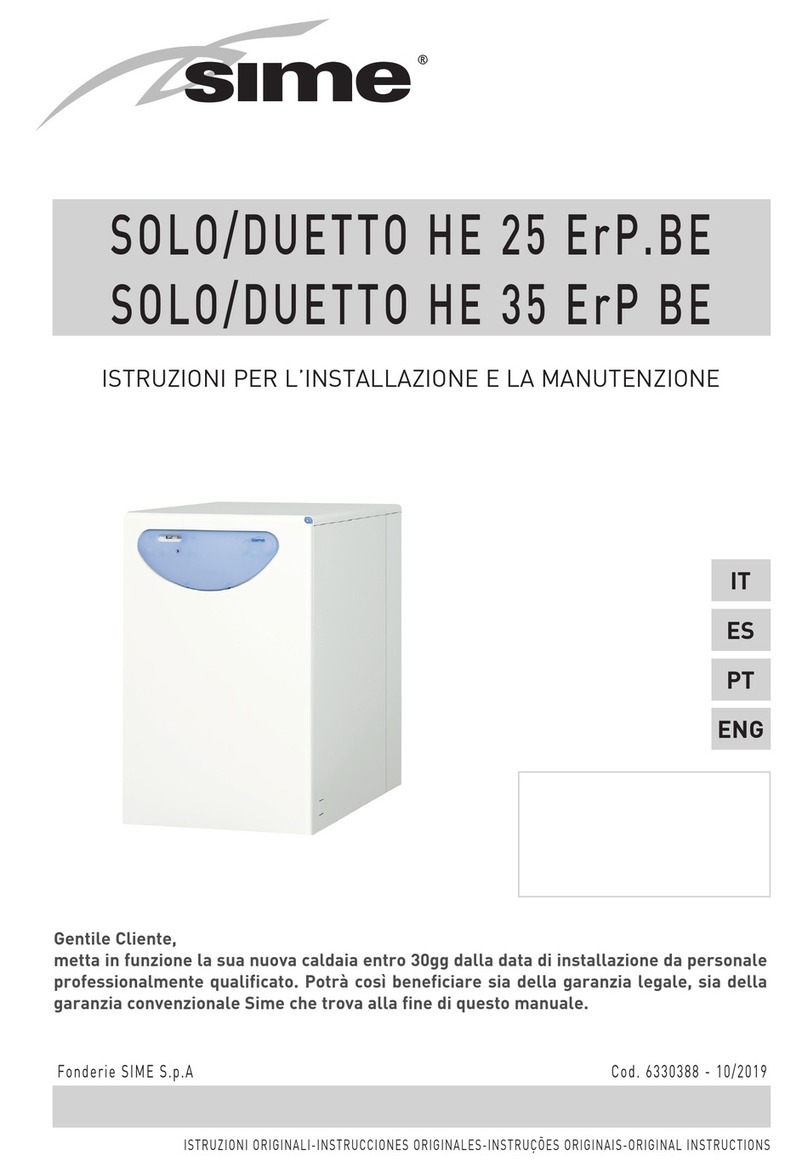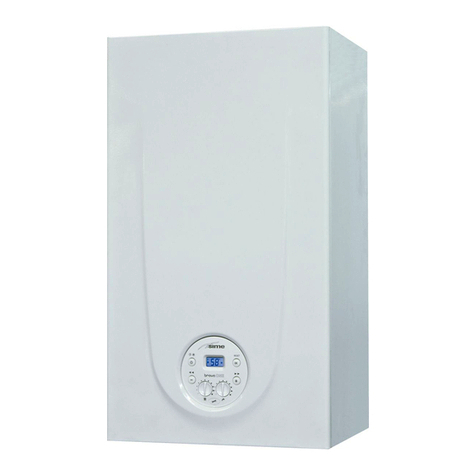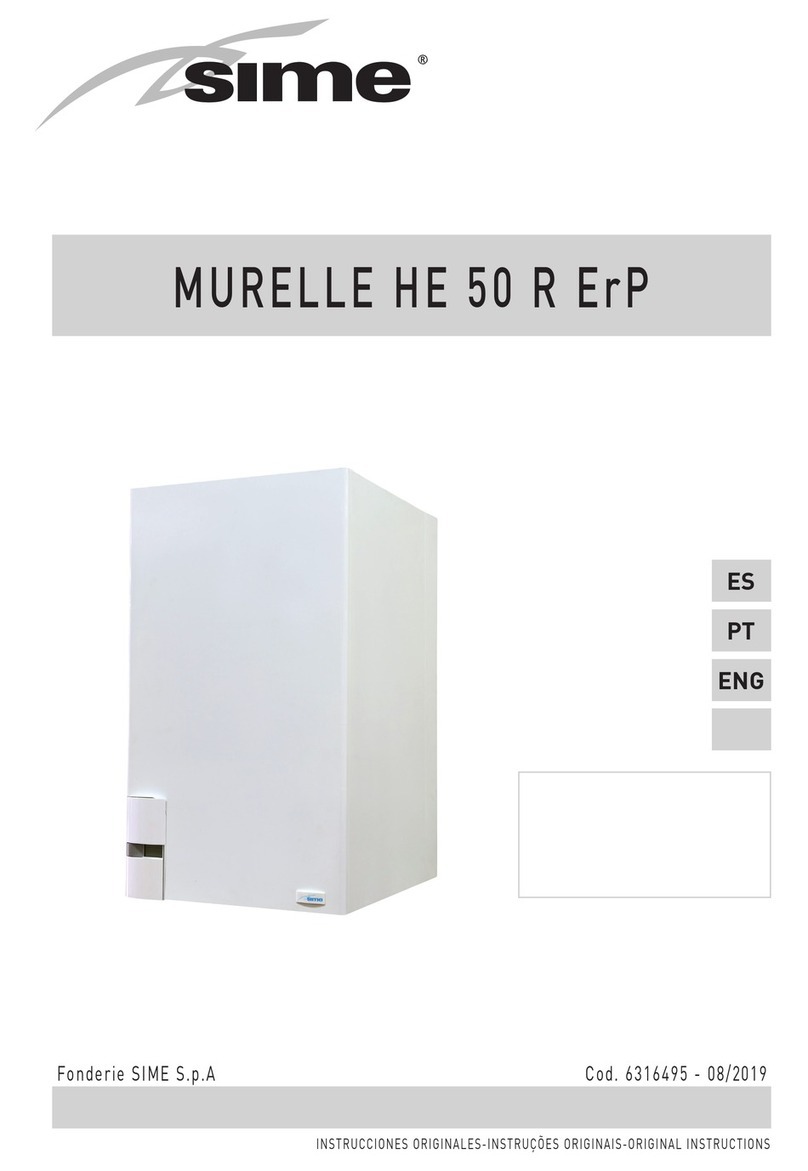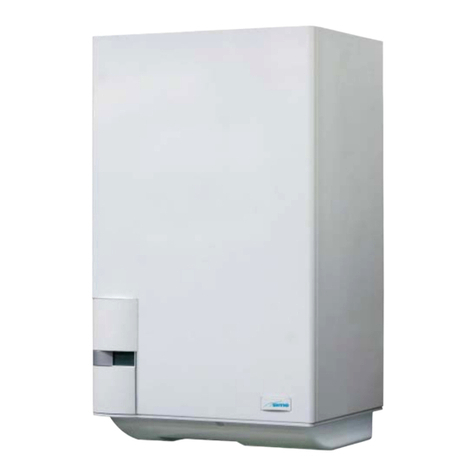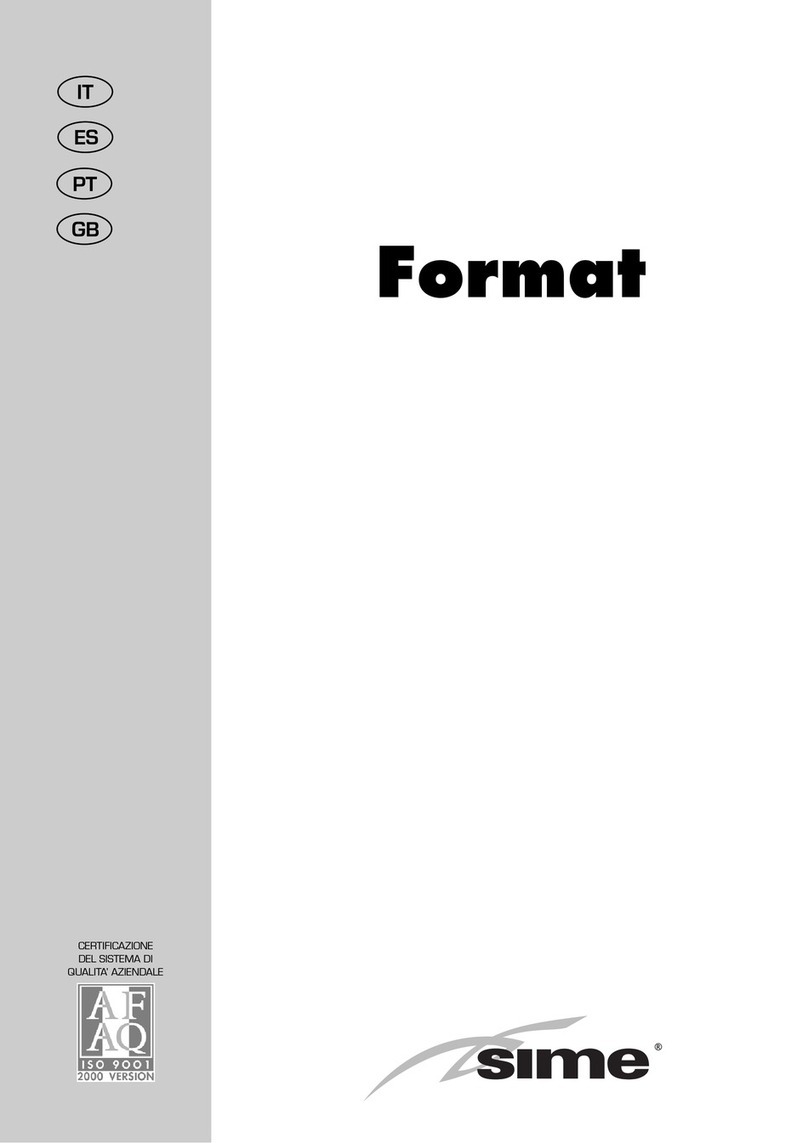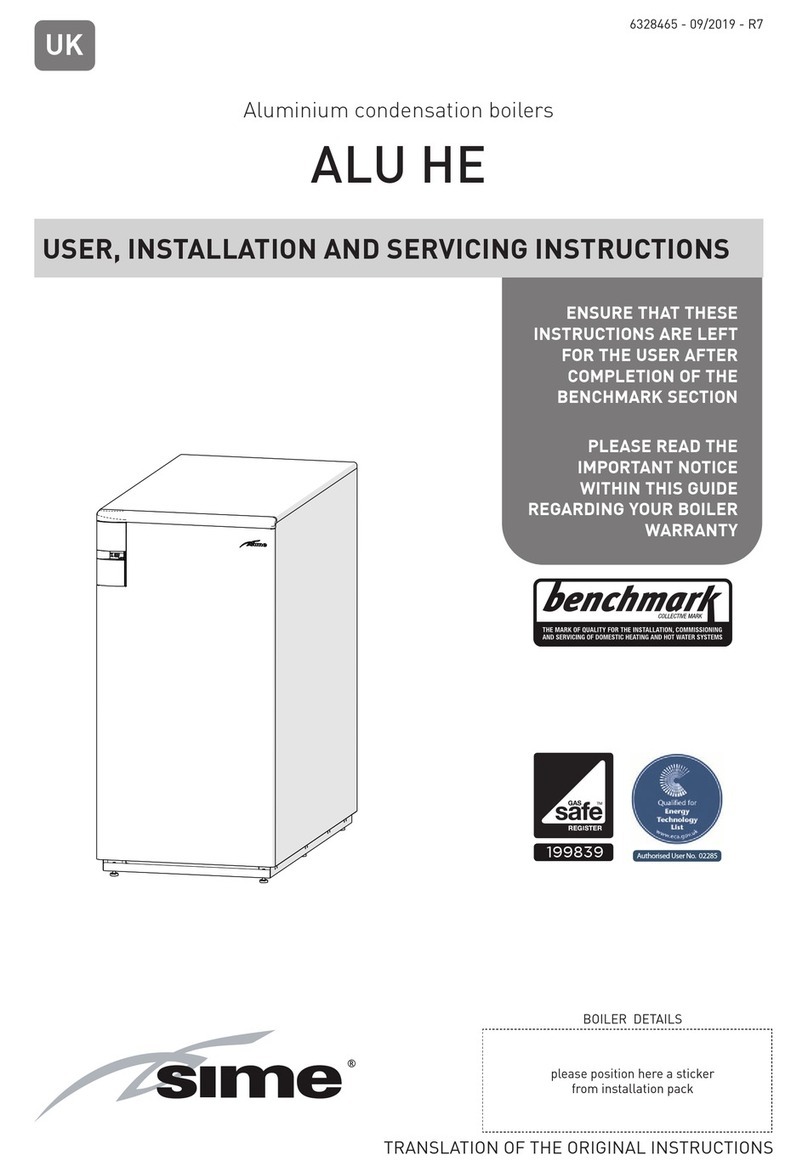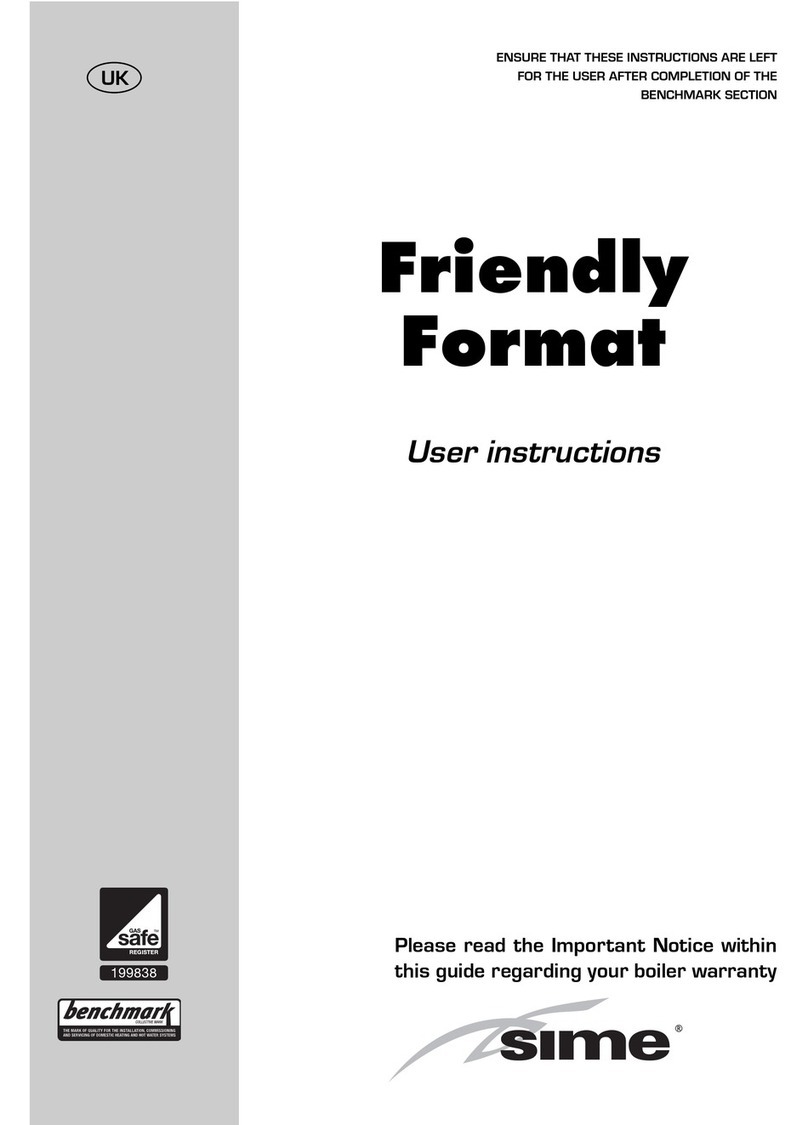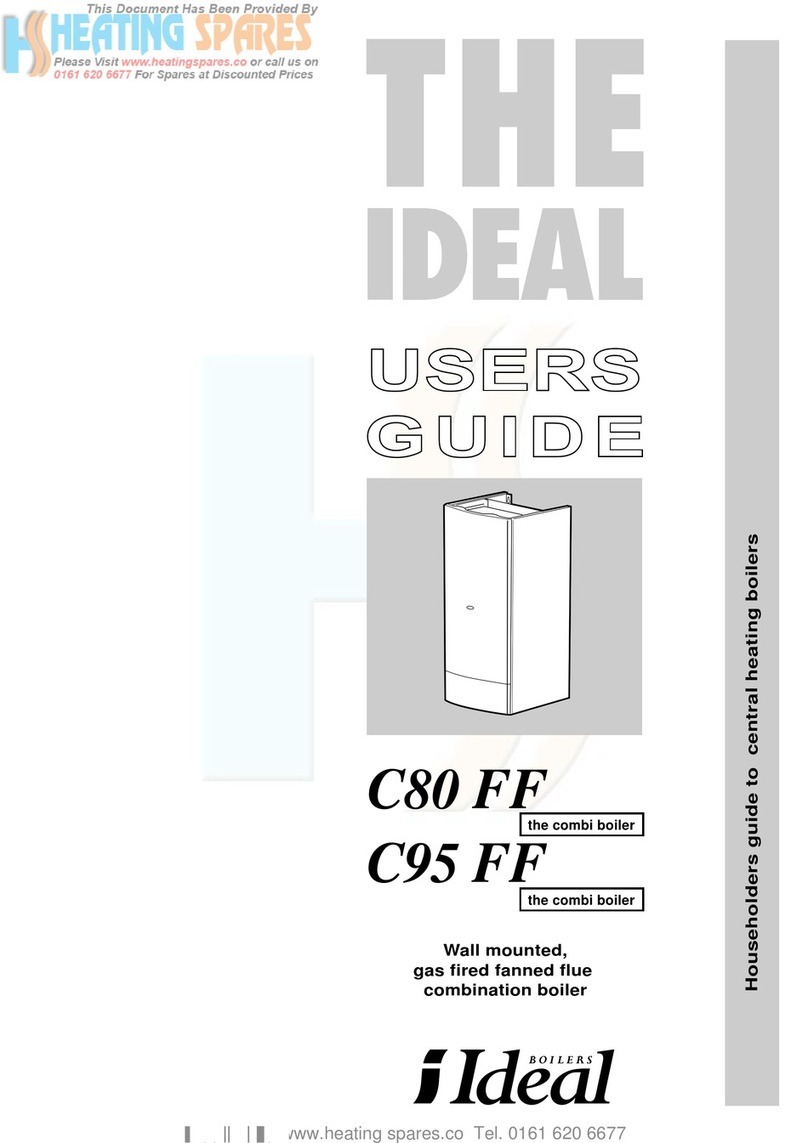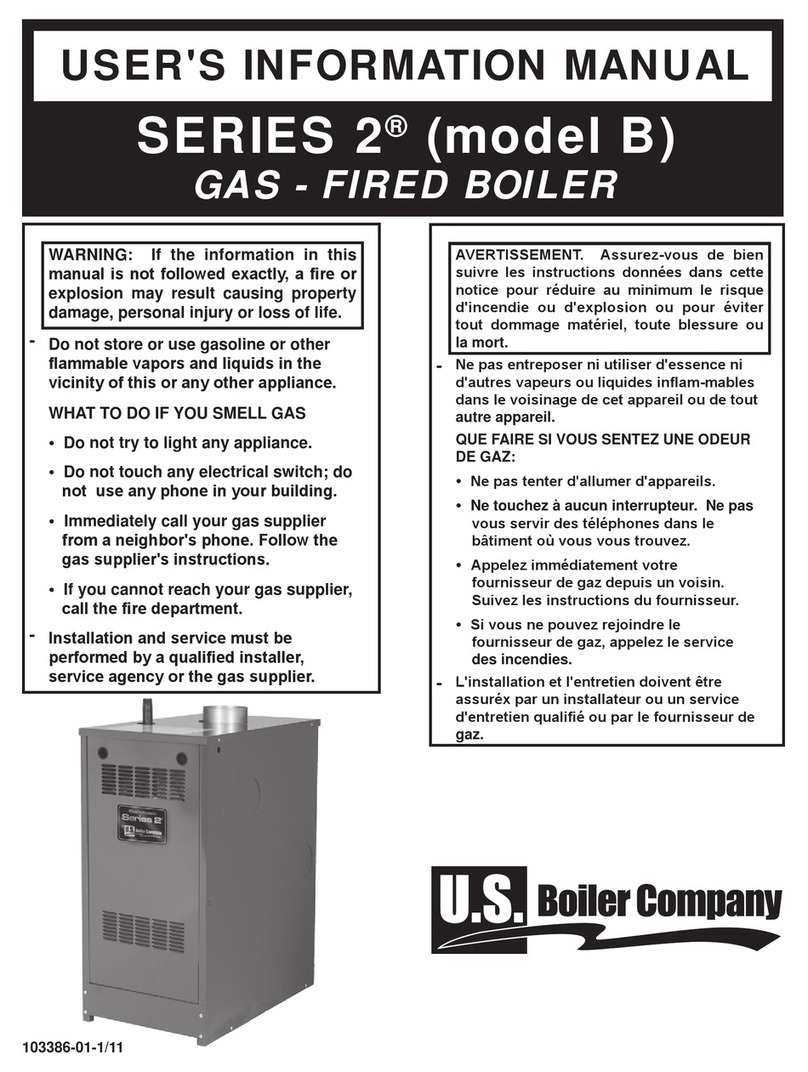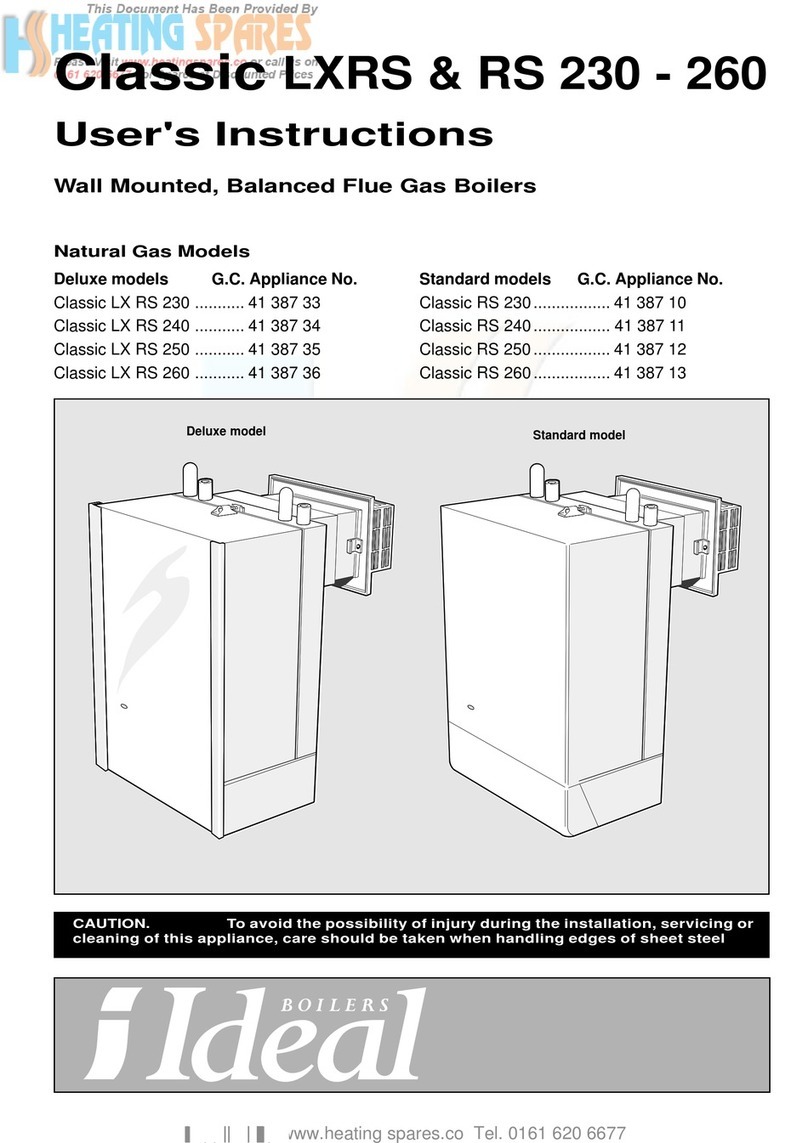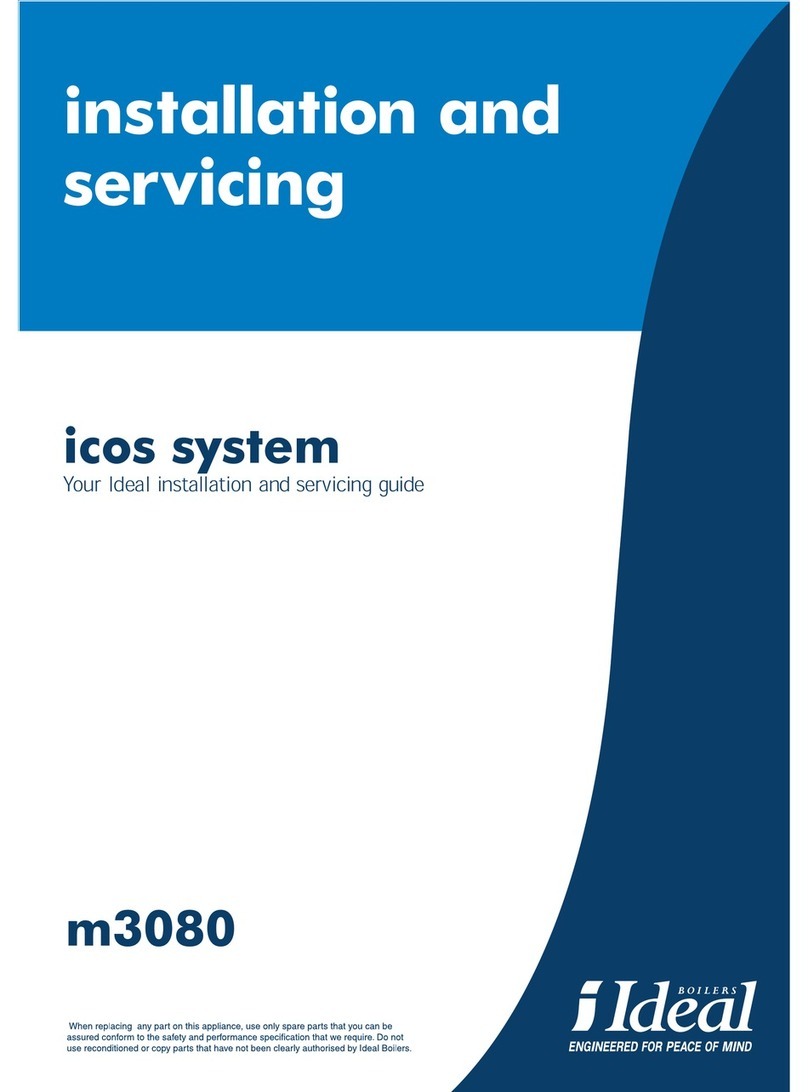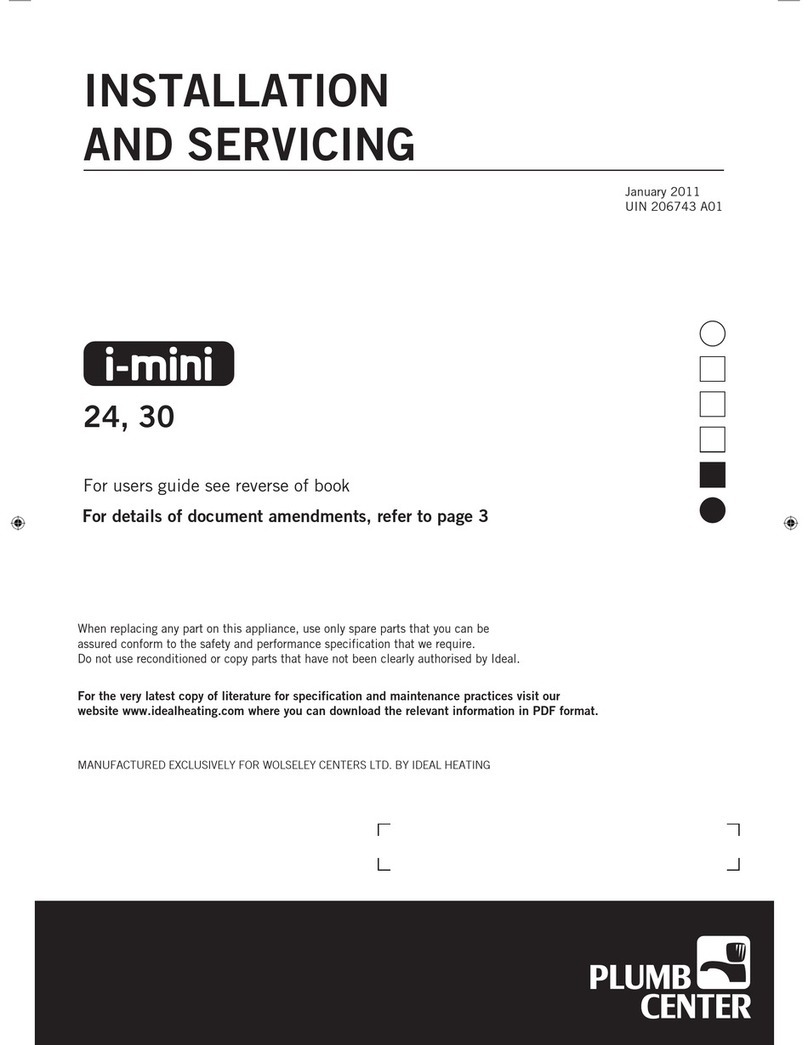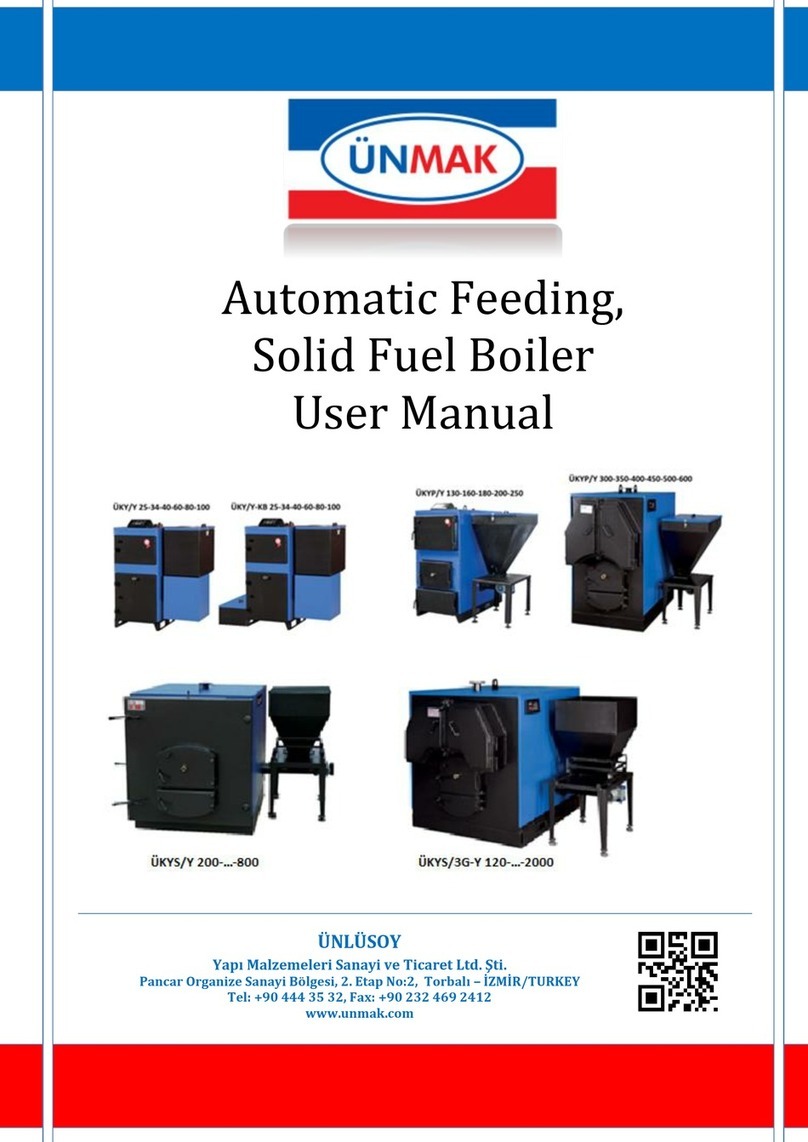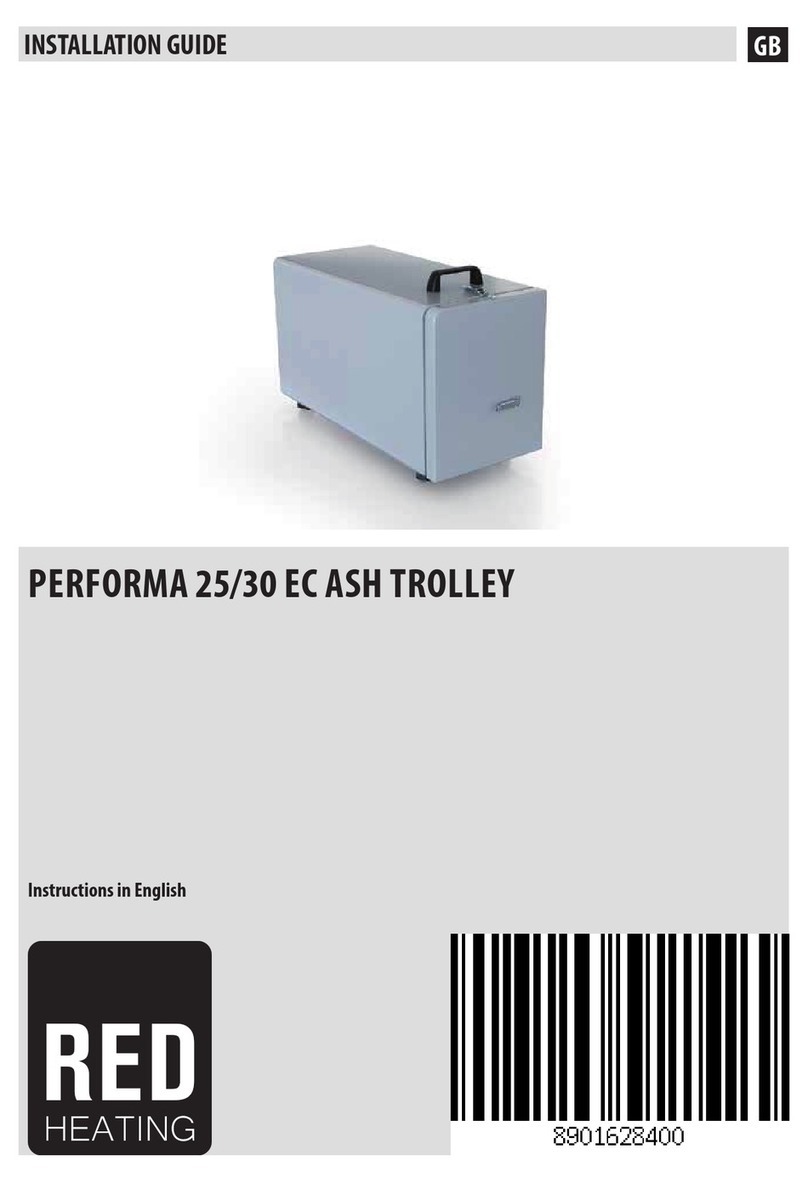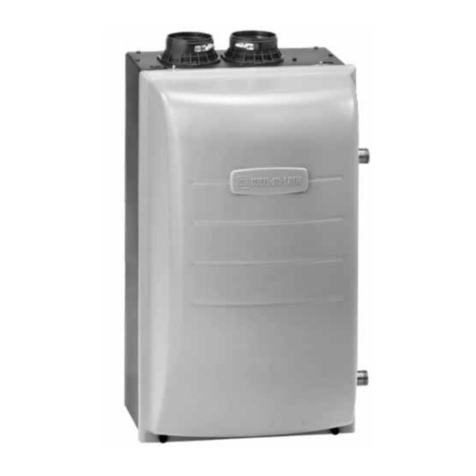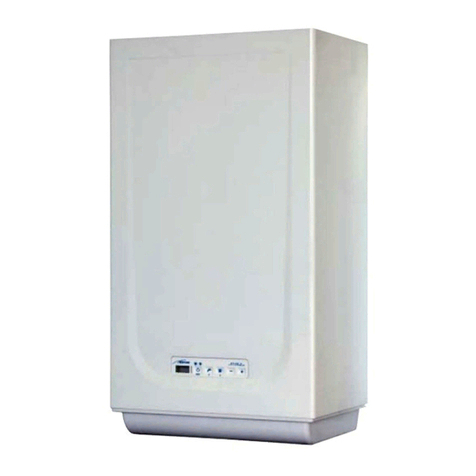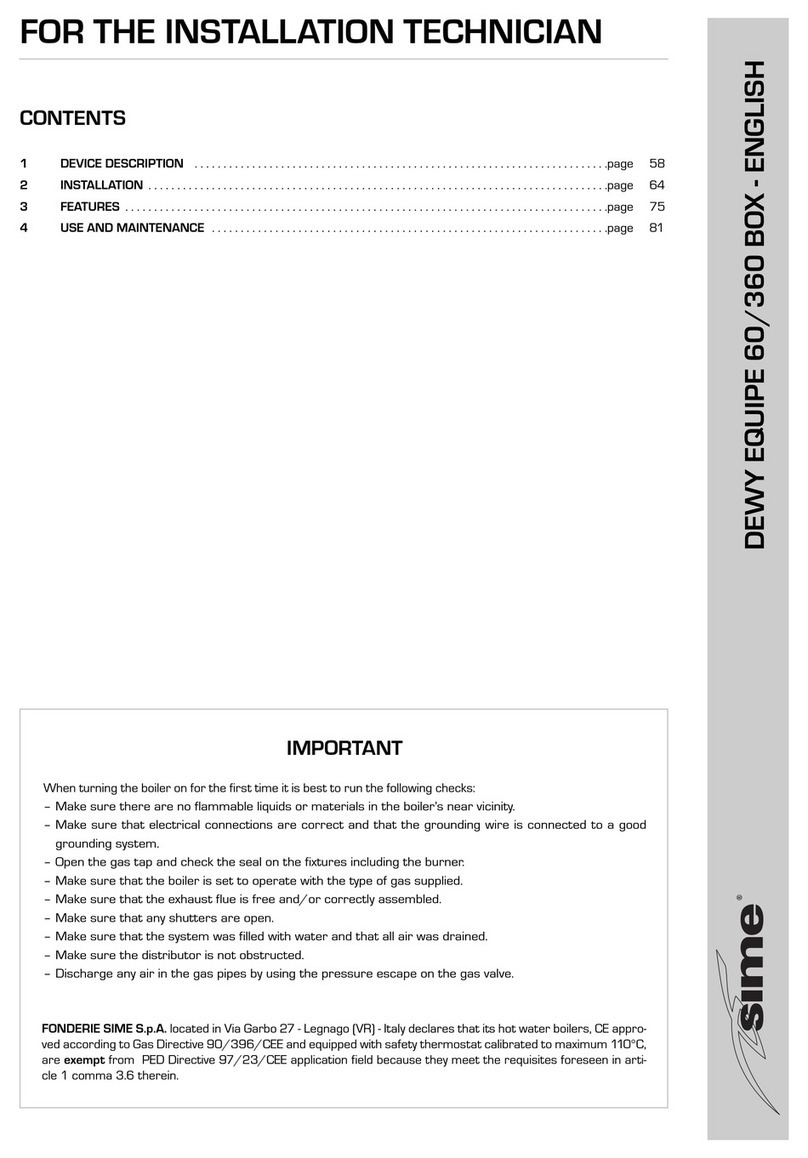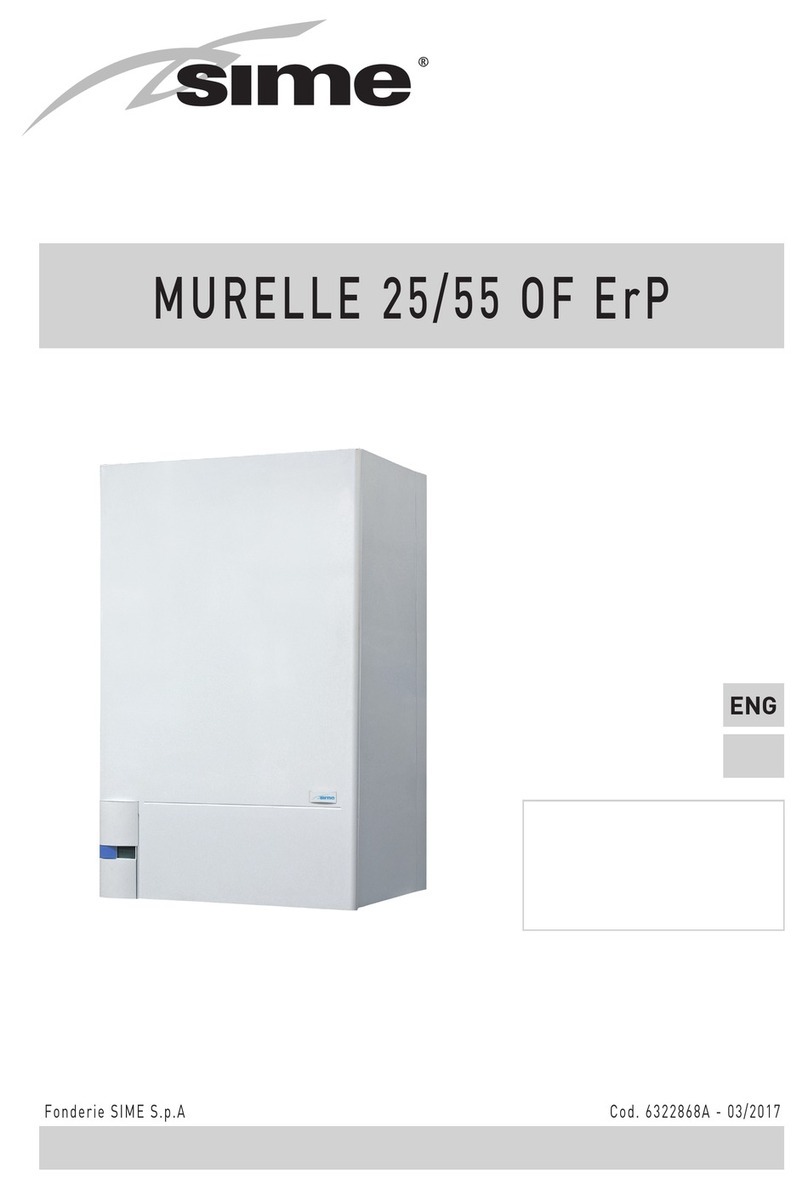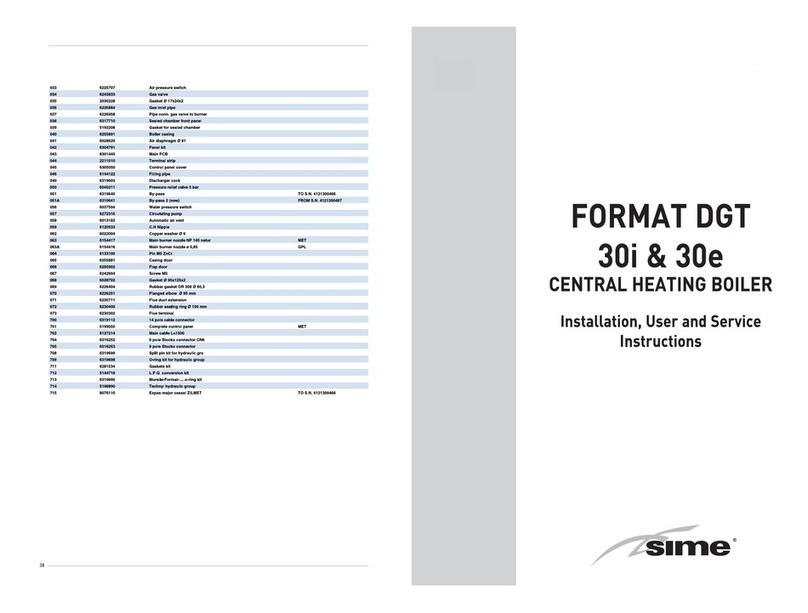
15
2.3 CONNECTING
UP SYSTEM
To protect the heat system from dama-
ging corrosion, incrustation or deposits,
before installation it is extremely impor-
tant to clean the system using suitable
products such as, for example, Fernox.
Complete instructions are provided with
the products but, for further information,
contact HUNT HEATING TECHNICAL
DEPARTMENT.
For long-term protection agains corro-
sion and deposits, the use of inhibitors
such as Fernox is recommended after
cleaning the system. It is important to
check the concentration of the inhibi-
tor after each system modification and
during maintenance following the manu-
facturer’s instructions (specific tests kits
are available).
The safety valve must be connected The
discharge drain pipe fitted to the relief
valve must be located so as to be visible,
alternatively a suitably sized tun dish
can be used. If the heating system is on
a higher floor than the boiler, isolation
valves must be installed on the heating
system delivery/return pipes.
WARNING: Failure to clean the heating
system or add an adequate inhibitor
invalidates the device’s warranty.
Gas connections must be made in accor-
dance with current standards and regula-
tions. When dimensioning gas pipes from
the meter to the module, both capacity
volume (consumption) in m3/h and gas
density must be taken into account.
The sections of the piping making up
the system must be such as to guaran-
tee a supply of gas sufficient to cover
the maximum demand, limiting pressure
loss between the gas meter and any
apparatus being used to not greater
than:
– 1.0 mbar for family II gases (natural
gas);
– 2.0 mbar for family III gases (butane or
propane).
An adhesive data plate is positioned insi-
de the front panel; it contains all the
technical data identifying the boiler and
the type of gas for which the boiler is
arranged.
2.3.1 Connection of condensation
water trap
The drip board and its water trap must
be connected to a civil drain through a
pipe with a slope of at least 5 mm per
metre to ensure drainage of condensa-
tion water.
The plastic pipes normally used for civil
drains are the only type of pipe which is
appropriate for conveying condensation
to the building’s sewer pipes.
2.3.2 Filter on the gas pipe
The gas valve is supplied ex factory with
an inlet filter, which, however, is not
adequate to entrap all the impurities in
the gas or in gas main pipes.
To prevent malfunctioning of the valve,
or in certain cases even to cut out the
safety device with which the valve is
equipped, install an adequate filter on
the gas pipe.
2.4 INITIAL PHASE
SYSTEM FILLING
Cold system filling pressure must be 1
bar. The system must be filled slowly
so that air bubbles are released through
the air vents.
2.4.1 System draining (fig. 5)
To drain the system, turn off the boiler
and use the discharge valve (2 fig. 5).
2.5 EXHAUST
The boiler is supplied with a 80mm
gasket, which must be fitted over the
exhaust terminal prior to the flue being
installed. (11 fig. 4/b - 4/c - 4/d) Currently
the “cascade” fluing option is not availa-
ble fro use in Australia. Available fluing
options are shown in fig6.7and 8.
2.5.1 B type (fig. 6)
If the inlet is not connected, the boiler
should be regarded a Class B device.
When installing the boiler in locations
where it needs to be protected from
water, replace the intake terminal inser-
ted in the flange with terminal code
8089510. For information on how to con-
figure the boiler in this mode see figure
6.
WARNING: The maximum overall length
of the 80 mm exhaust flue connected,
is determined by the load losses of the
individual accessories installed, and
should not exceed 42 mmH20. when
the load losses exceed 4 mm H20, in
order to ensure correct operation of
the appliance, set PAR 9 as indicated in
the TABLE1 on fig 6. See section 3.3 to
access installer parameters.
The exhaust pipe may be connected to
suitable existing flues.
When the boiler operates at low tempe-
rature, you can use the normal chimney
to the following conditions:
– The exaust pipe should not be used by
other boilers.
– The inside of the chimney must be
protected from direct contact with the
condensing boiler. Combustion pro-
ducts must be conveyed with a hose or
rigid plastic with a diameter of about
100-150 mm by ensuring that the con-
densate drain trap at the bottom of the
pipe. The effective height of the trap
must be at least 150 mm.
2.5.2 C Type
(fig. 7 - fig. 8)
The boiler becomes of a Class C device
(room sealed), when the intake terminal
is removed from the flange and separa-
te ducts(fig7) or coaxial ducts(fig8) are
connected.
Fig. 5
1
2
3
KEY
1 Water trap
2 Boiler discharge
3 Safety valve




















